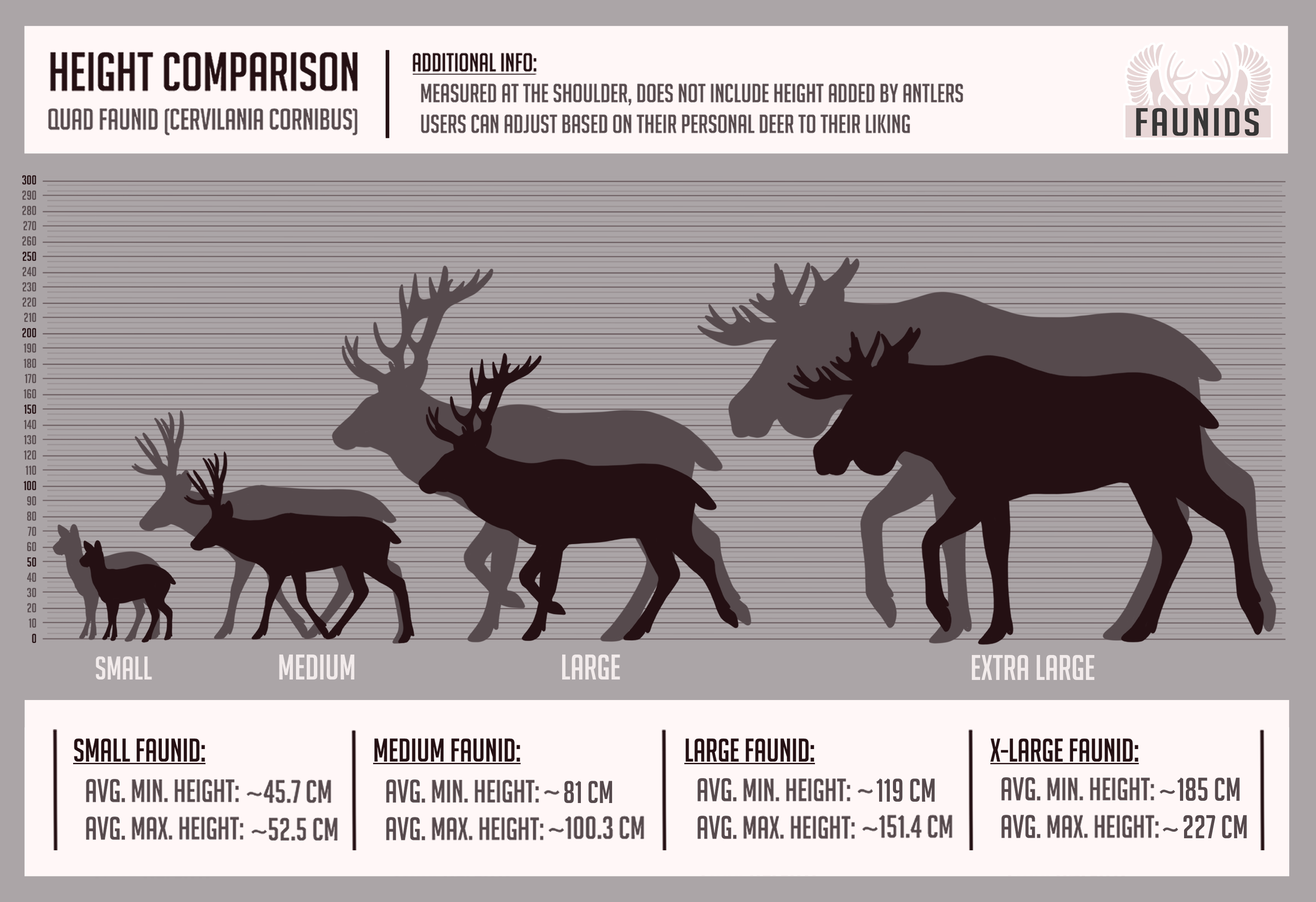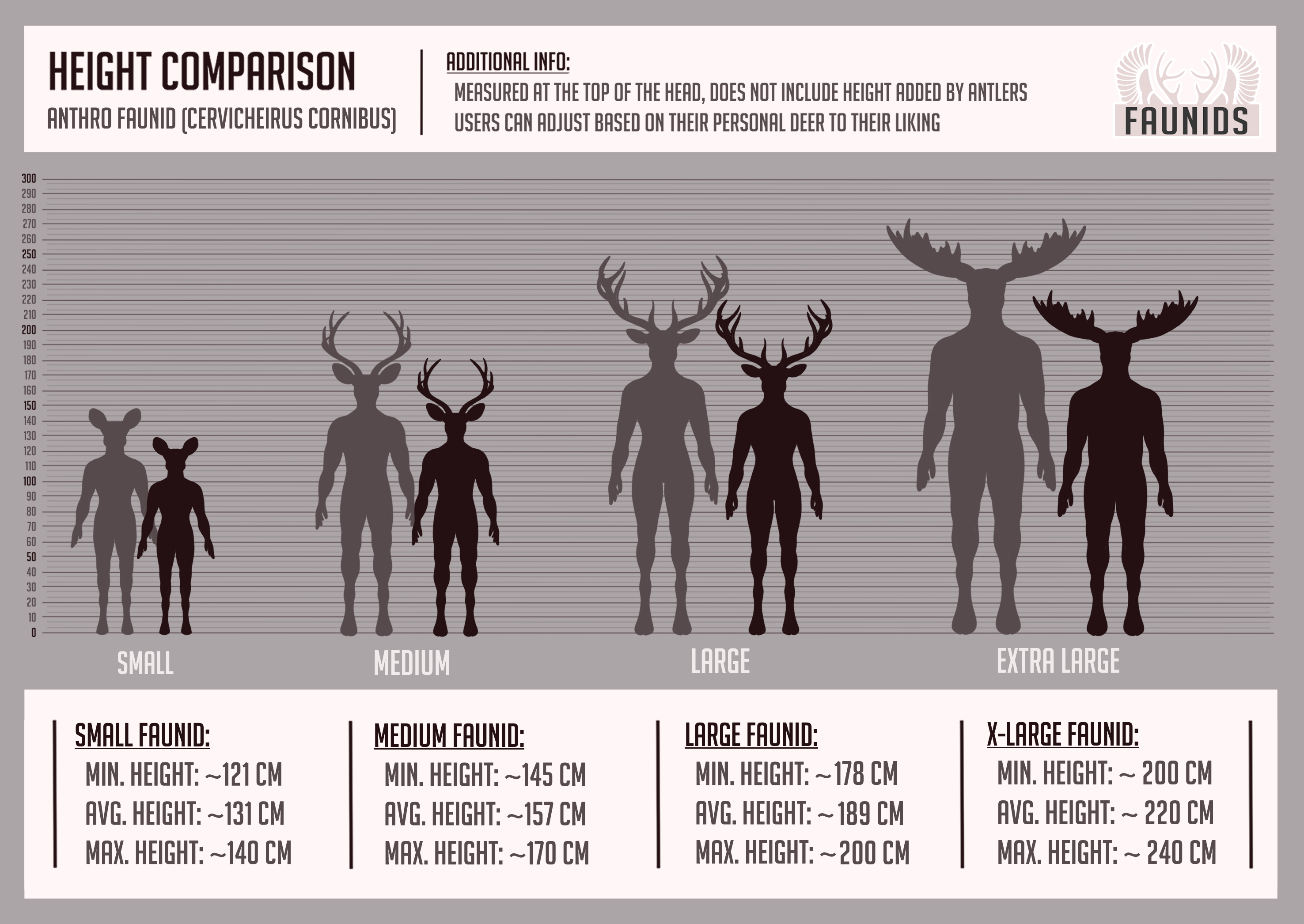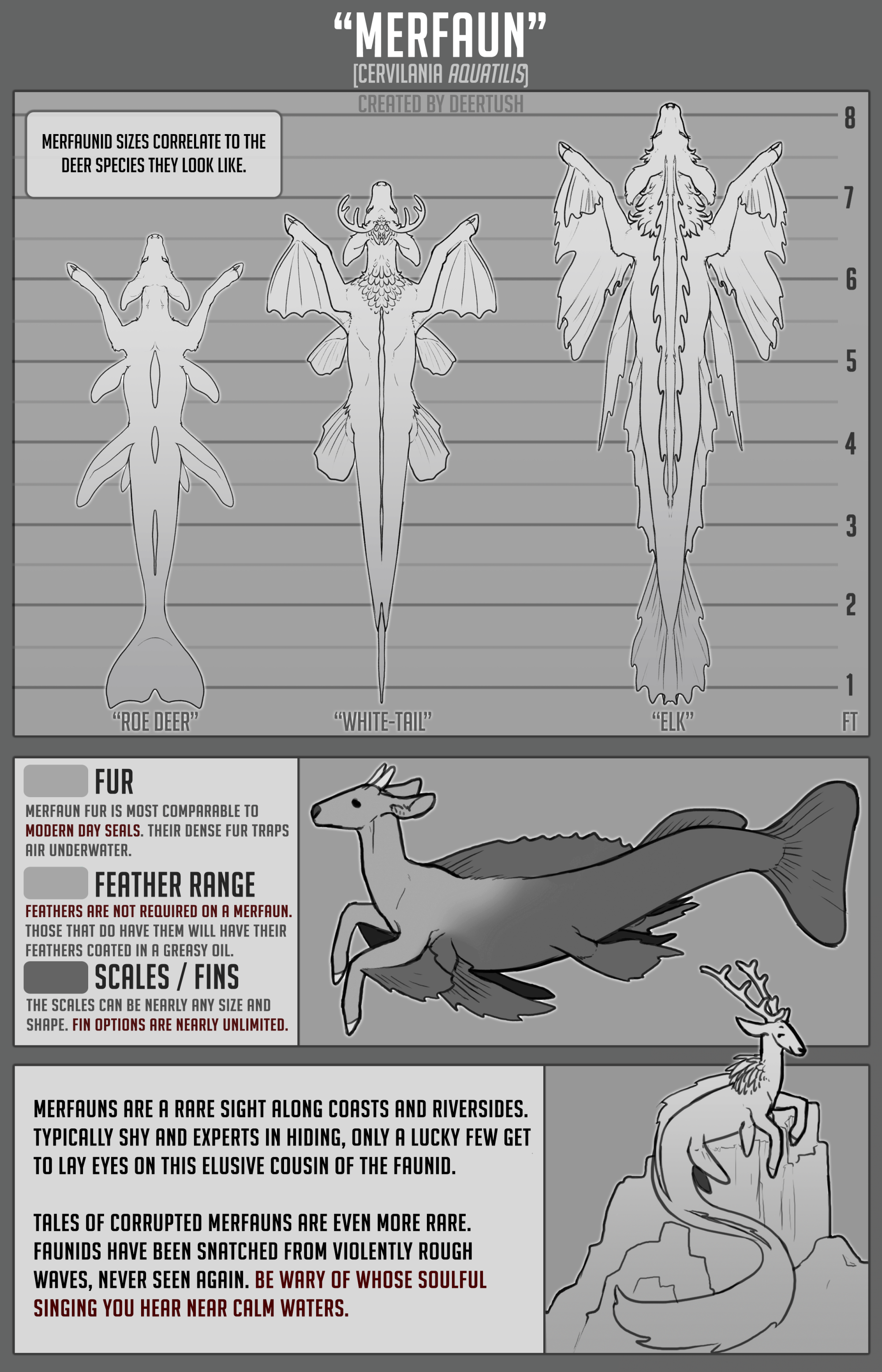faunidae
All faunids originate from the "Primordial" Faunids who were a mass hybridization of extant deer.
Over millions of years, proto-faunids adapted to new habitats and climates, walking bipedally more easily as their dew claws became nimbler (thumb-like). Most proto-fauns were blessed by Herne to succeed humankind with true hands, functioning arms, and high intelligence. Some chose to remain as typical deer.
Together, they were tasked with keeping Atalav alive and prosperous.
Faunid Sizes
Faunids have a dramatic range in sizes based on visual species inspirations (e.g., elk, pudu, axis).
Use the quad chart to approximate where a species falls; several species sit between categories.
Height charts drawn by Necrologia.
Height Chart — Quadruped

Height Chart — Anthro

Cervicheirus Cornibus (Anthro Faunids)
Cervicheirus Cornibus are the most populated and versatile subspecies. Standard conformation resembles an anthropomorphic deer with feathers; mutations can break from the standard. Considered the original subspecies by some, who claim they were made in Herne's vision.
- Antlers never shed.
- The only subspecies capable of primordial mutation.
- Most likely to be corrupted.
Cervilania Cornibus (Quadruped Faunids)
Almost identical in shape to standard deer, Cervilania Cornibus (Quadruped Faunids) are quadrupedal Faunids with matching intelligence to that of their sister species. Lacking hands, they typically employ themselves as means of physical labor similar to that of work animals.
Controversy secretly hides in the shadow, believed that all Cervilania have connections to the demi-god, Fenris. The only connection being that Fenris is also a quadruped. This rumor is not confirmed nor can it ever be confirmed.
- Antlers never shed.
- Occasionally used for spying.
- Some individuals can communicate with standard deer.
Cerv. Aquatilis (Merfauns)
Water-borne mammals that primarily inhabit secluded waters. Incapable of walking on land; use fish-like tails and fins. Skeletons are flexible and durable, minimizing irreparable breaks. Feathers may appear on the front half, coated in thick preen oil. Dense short fur traps air for insulation and hydrodynamics.
- Antlers never shed.
- Susceptible to corruption.
- Can hold breath for ~3 hours.
- Tastes like fish.
Merfaun — Overview

Cerv. mimotaur (Minodae)
Large Cornibus subspecies mostly in the Split Mountains; typically outweighs/outgrows standard faunids (outside exceptional moose/elk-like individuals). Bodies store fat readily for harsh winters or poor harvests. Muscles are not “showy”; even in summer they remain proportionally large.
Hormones affect horn size and aggression. Any sex/gender can grow horns; higher testosterone yields larger horns. Natural sources can supplement testosterone/estrogen. Young aggressive bulls may headbutt in arenas (often banned within villages due to damage). Courtship may be decided by battle at the cow’s discretion.
- Struggles to hybridize.
- Only bipedal.
- Less susceptible to corruption.
Minodae — Overview
